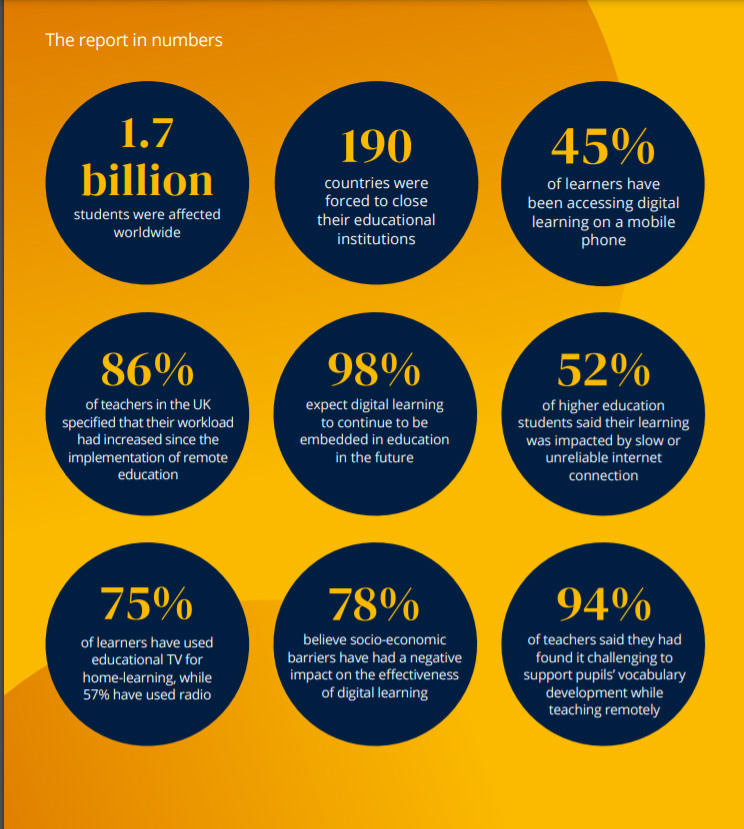
Last year my first article as Commissioning Editor for Digital Learning magazine started with the words: 'On February 9, nearly 200 million primary and secondary school students in China started their new term in what has been described as the largest home learning experiment ever.'
The title Coronavirus Triggers Surge of Interest in Online Learning seems something of an understatement now. A year on, in a report from OUP, we learn that 'over the course of one year, 190 countries have—at some point —been forced to shut the doors of their educational institutions, affecting more than 1.7 billion students worldwide.'
The OUP report Education: The Journey Towards A Digital Revolution was published in April this year and is based on evidence from seven countries: Brazil, India, Pakistan, South Africa, Spain, Turkey and the UK. It draws on extensive secondary research, contributions from experts at OUP and a panel of 359 teachers.
The report aims to inform governments and policymakers how digital learning has developed around the world from the panic of the early days to the current state of play where online learning is seen as an integral part of teaching and learning in most schools. The report says: 'While the pandemic has highlighted and, in many respects, exacerbated issues for the underprivileged, the speed of which educational institutions switched to digital and worked around challenges was and remains truly impressive. We have a duty to learn from these positive elements in order to move into a new age of digital transformation, as well as appreciating where there is a need for improvement, so the focus can be on making hybrid learning a benefit for everyone.
Now 92% of UK teachers describe themselves as confident but before COVID hit, just under two in three (65%) felt confident about using digital learning. Looking at Twitter and online forums, it often felt as if the number was even lower and there was a lot of talk of worksheets at that time.
UK teachers were not alone in being daunted. OUP’s research showed that a lack of familiarity with digital products led to examples of ‘poor digital integration’ in Turkey. In Pakistan, respondents criticised a lack of ‘focus’ towards widespread digital education, which they said, ‘is also a supply problem.’